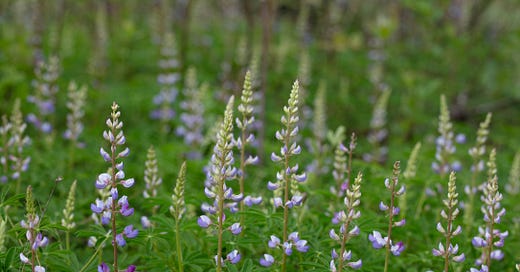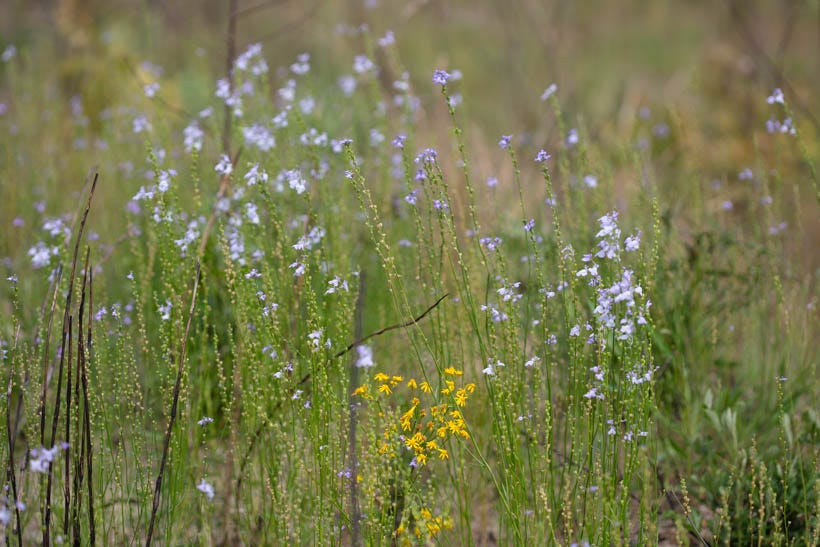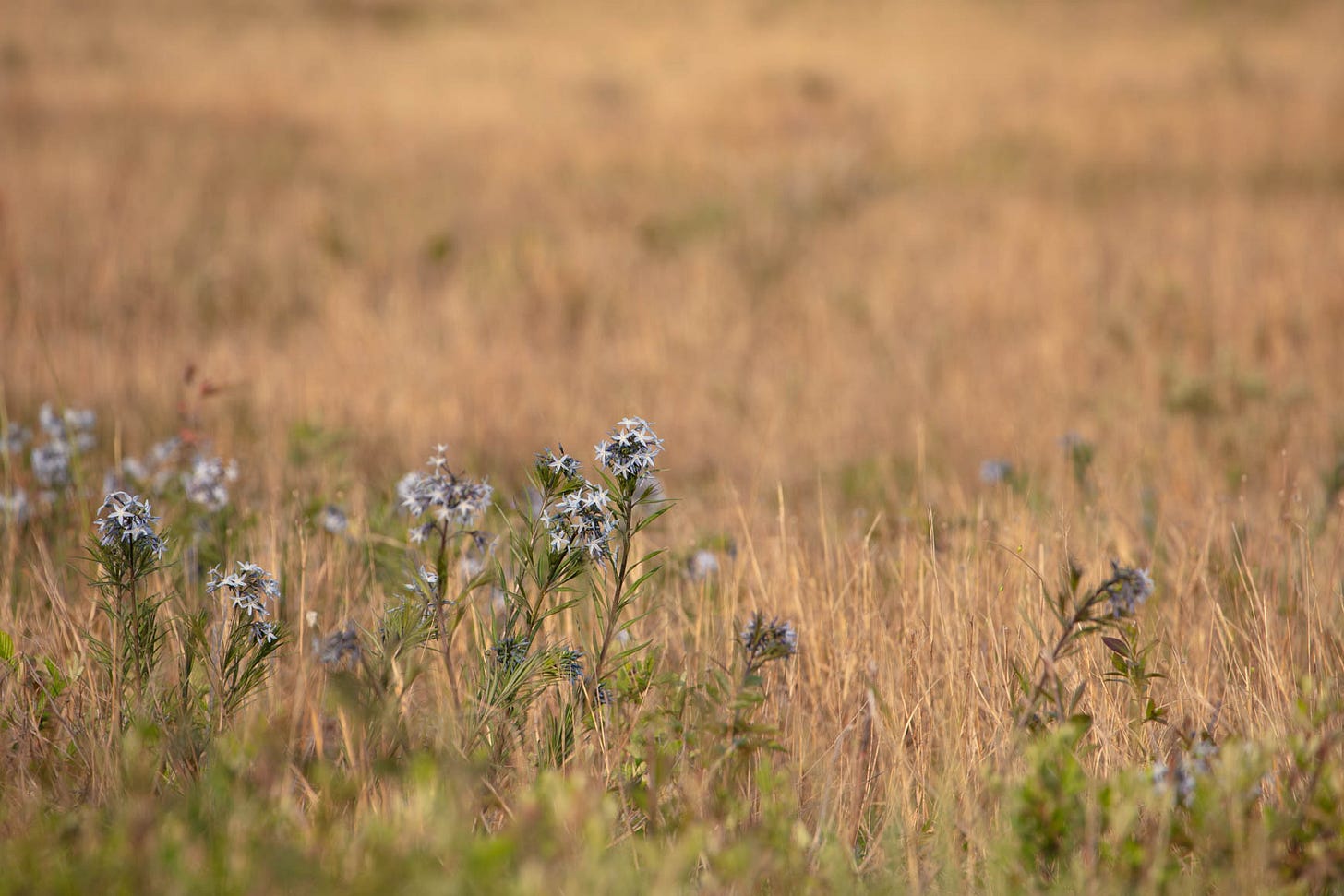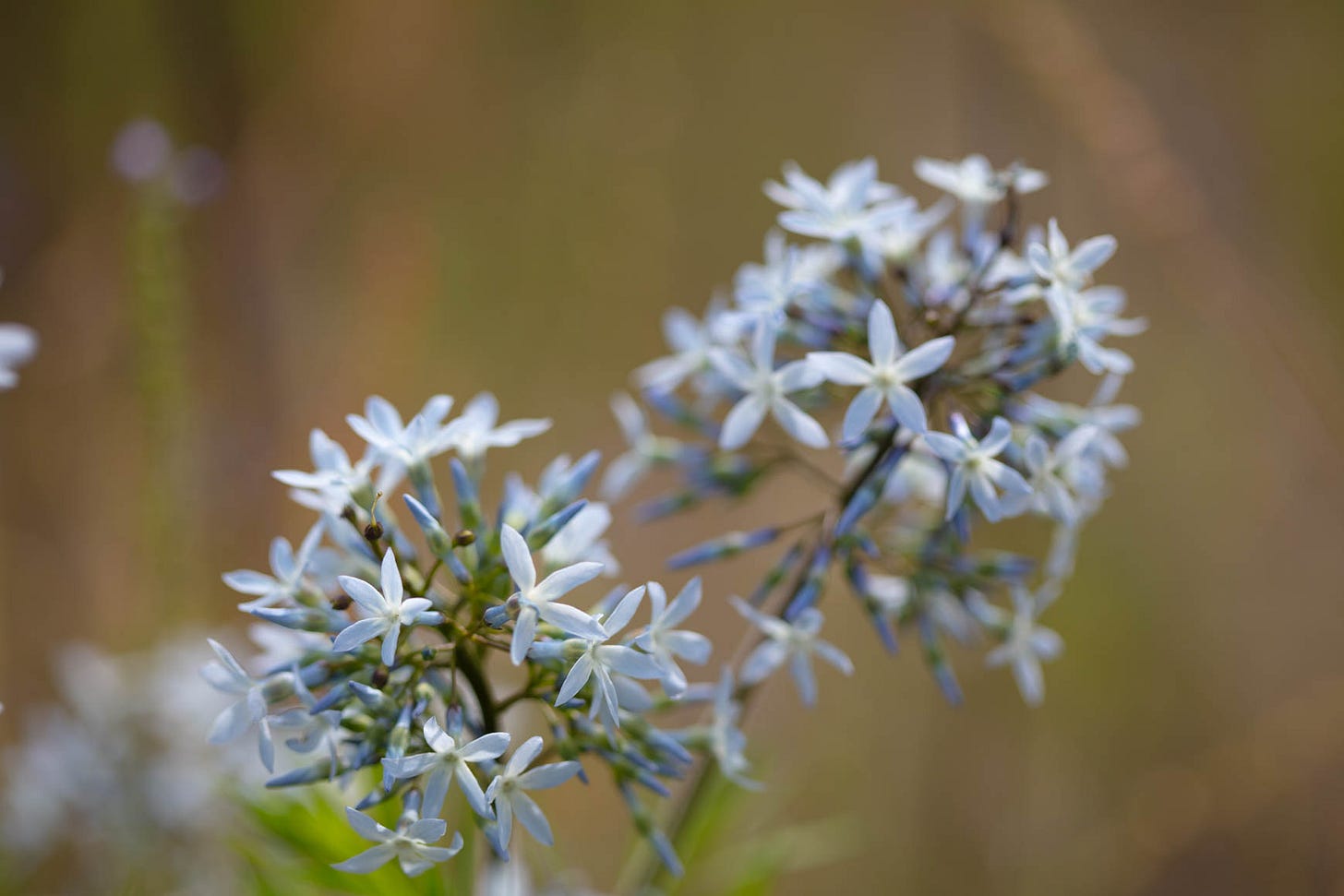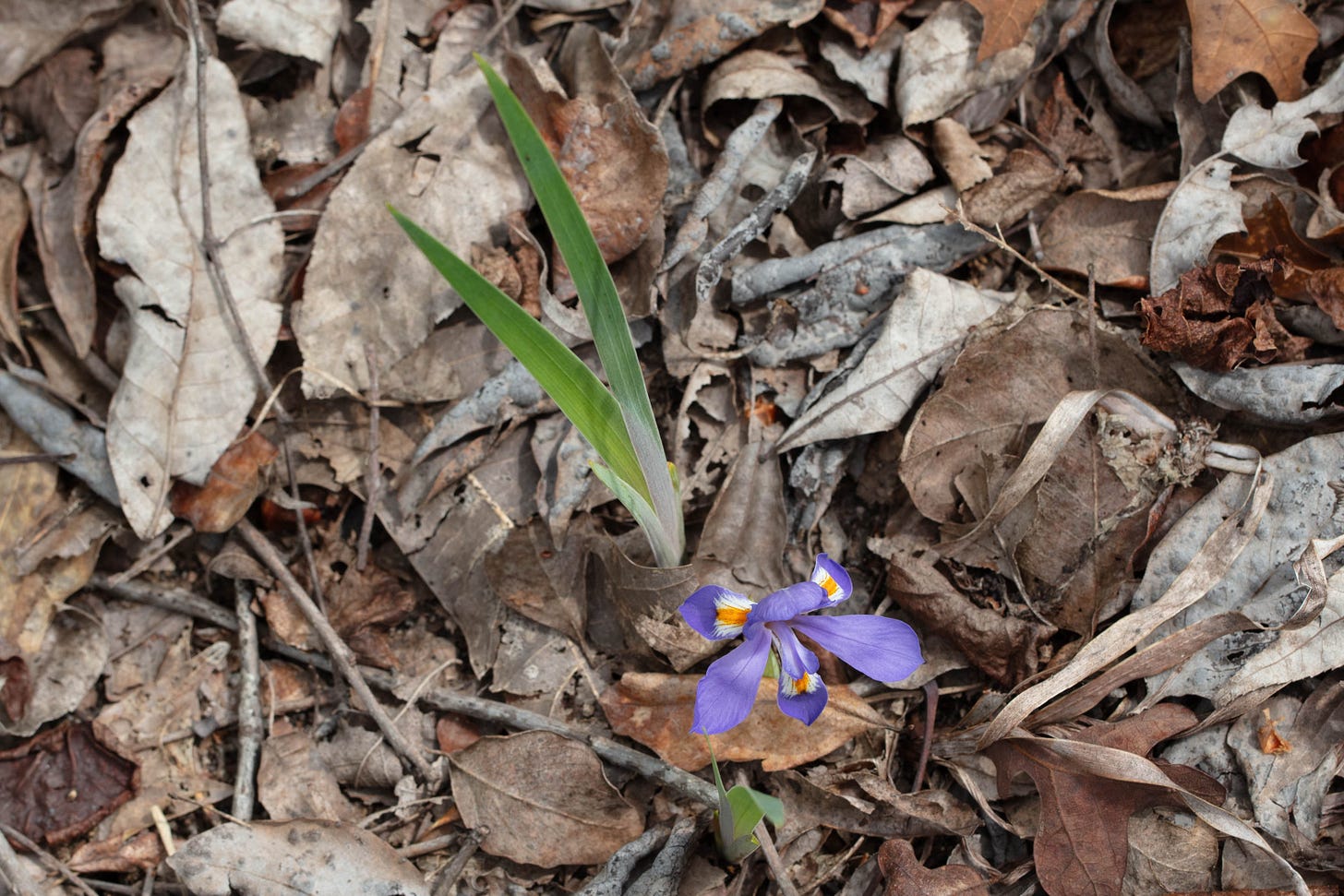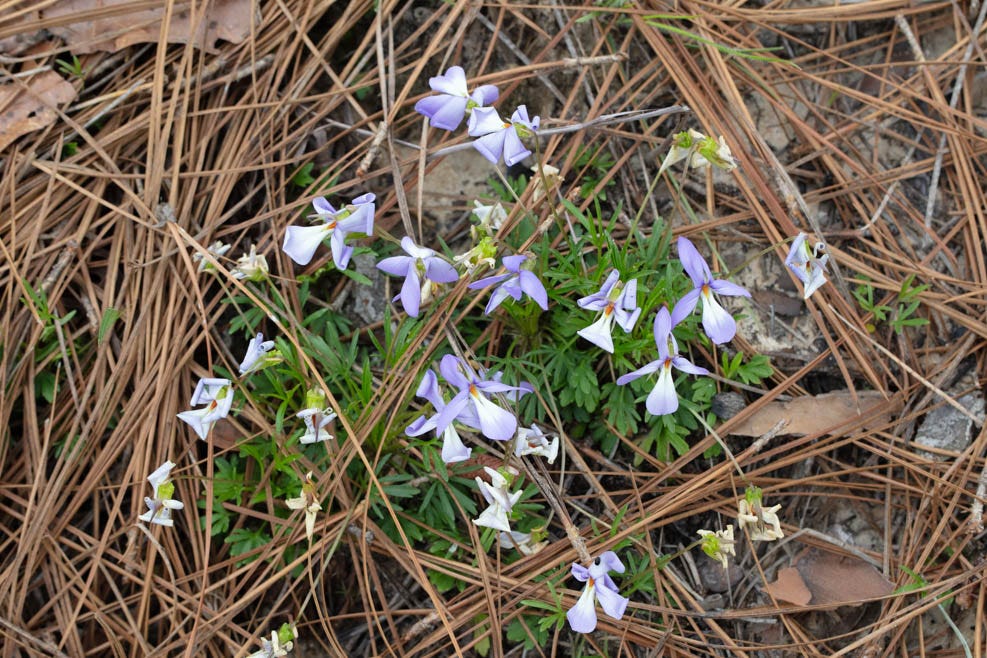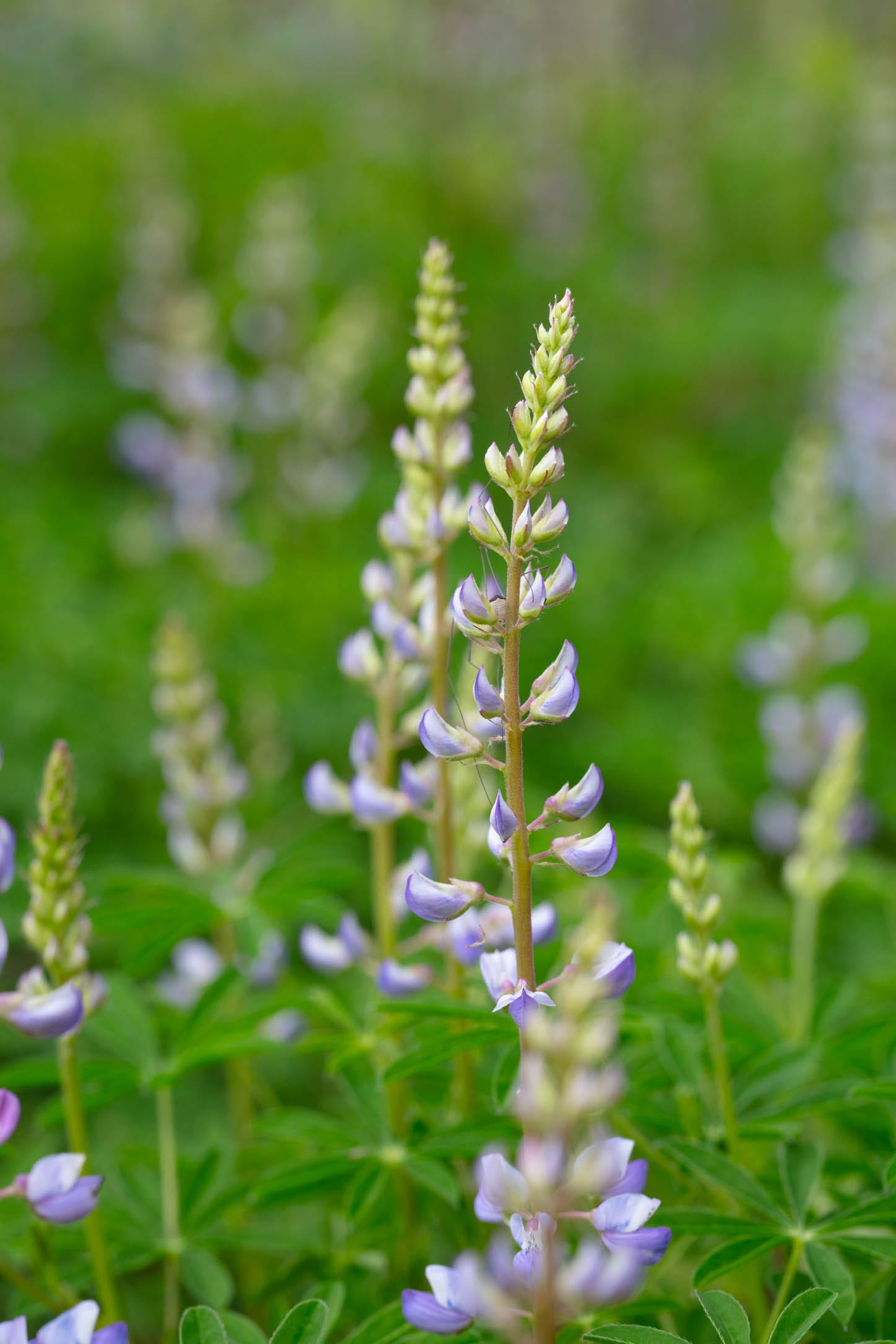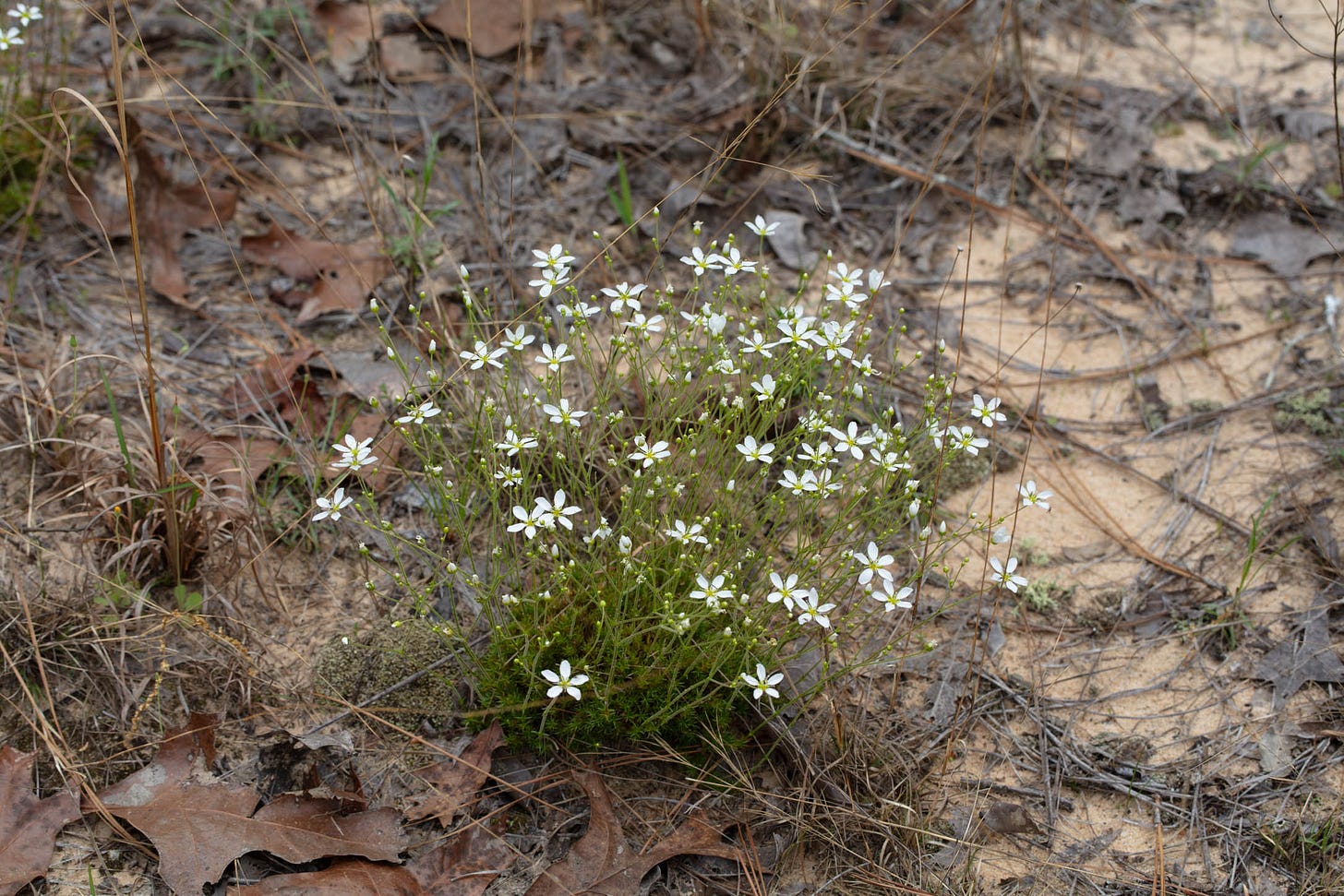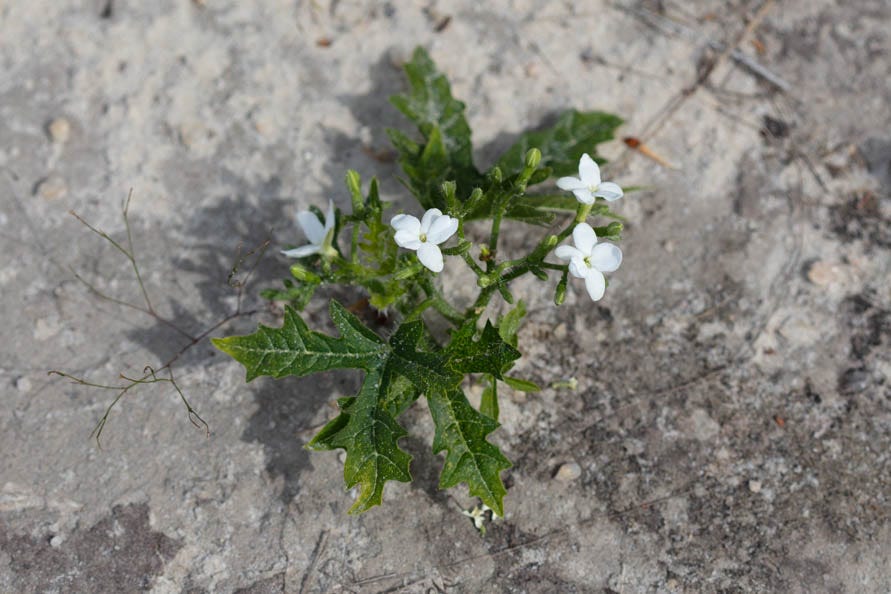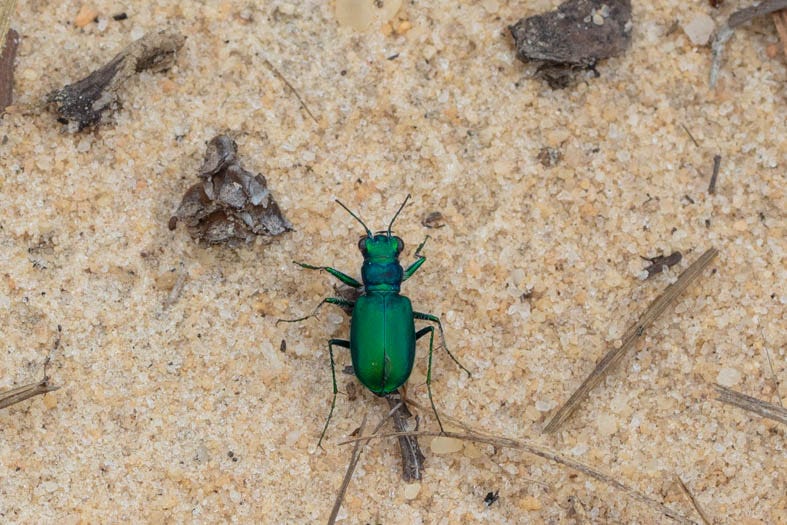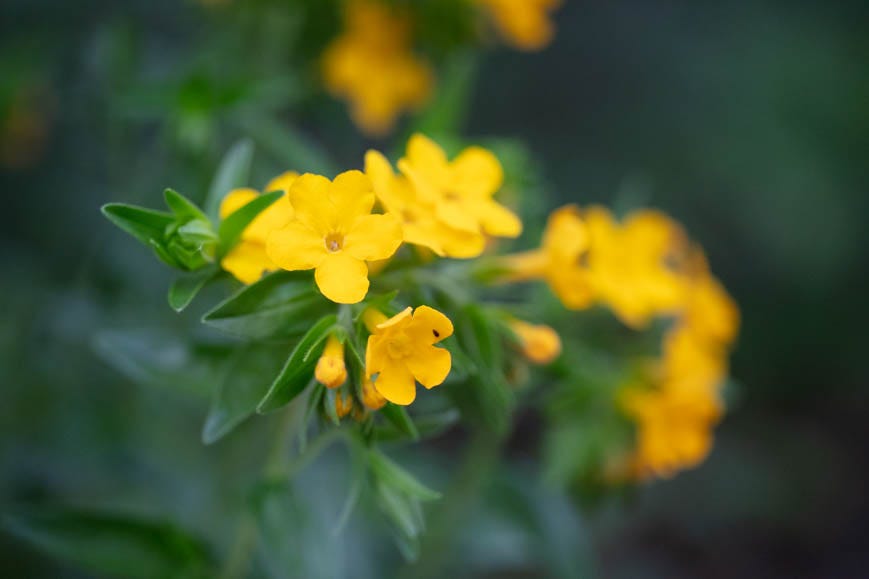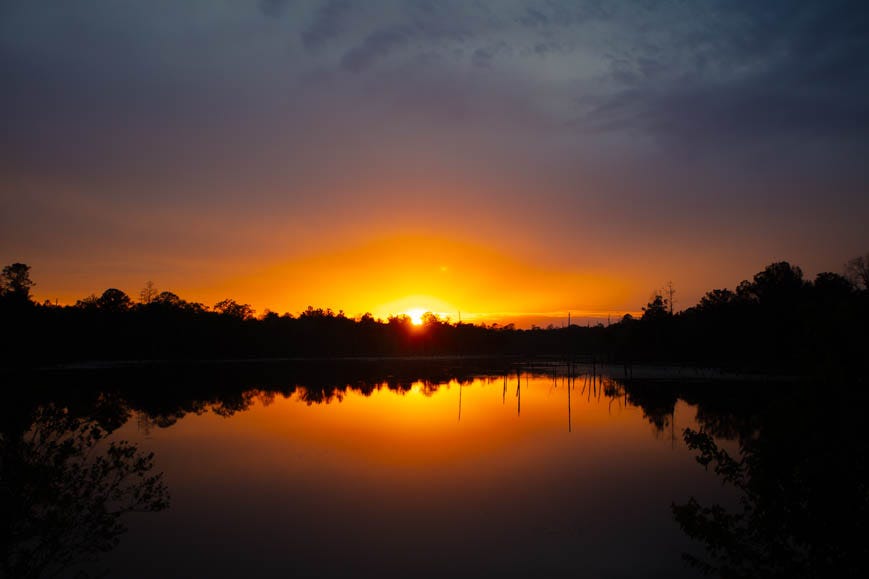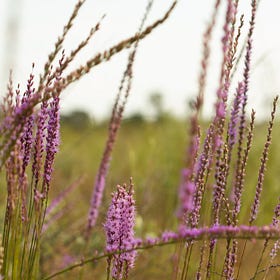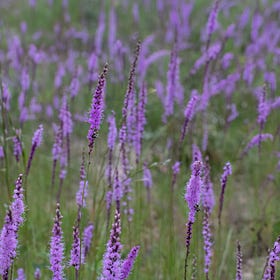Autumn brings an explosion of color, fields of purple liatris and yellow golden-asters, pink agalinis and dicerandra, goldenrod, and sunflowers; and the flashy red and orange, white-spotted wings of gulf fritillary butterflies who visit these flowers.
Winter brings rest, flowers faded and turned to seeds, sustenance for sparrows; vegetation bleached to shades of beige much like the sand from which it grows. Winter brings silence, broken at intervals by the wind weaving through needles of longleaf pine.
Before summer brings the slender stems of dawnflower stitching carpets over the sand, embellished with its white trumpet-shaped blossoms; before summer brings the pink flutter of pinelandcress visited by bright wasps; before the bogs blossom with meadowbeauty and orchids — the orange and yellow torches of Platanthera ciliata and cristata, and the white lace of Platanthera conspicua dazzling in shade dark as the mud below; between winter’s austerity and summer’s heat is April, when color returns to the sandhills.
Timid toadflax, a pale lavender preview of the liatris riot of later months, mingles with Small’s ragwort, a fountain of yellow composite blooms, a glimpse of the golden-asters, scratch-daisies, and goldenrod that will blaze upon the autumn ground.
Like pieces of spring sky fallen to earth is fringed amsonia, each stem affixed with tassels of skinny leaves and topped with domes of star-shaped flowers. One of the earliest blooms to brighten the sand-colored grassland, it flowers throughout the spring, persisting well into May.
In the shade of shrubs that border a pond, violet and orange push through the carpet of fallen leaves. Flowers one expects in the mountains further north also find a home in the sandhills. Iris verna, a wild, North American iris, stabs the dense, leafy fabric with leaves like slender scissor blades; they stand above plum-colored petals splashed with tangerine. Peeking through nearby pine needles, blossoms of bird’s foot violet nod above the finely dissected leaves that give the plant its common name. I think the flowers are birdlike, too; the pointed orange spot in each flower’s center reminds me of a tiny beak.
Sundial lupine stands in the shadow of pines, nearly hidden by palmetto fronds, difficult to find until one is nearly stepping on the plants. Its column of purple pea flowers does not tower like its conspicuous siblings further west.
On stems thinner than thread, petals of pine-barren sandwort float above sand dulled by the bright white blossoms. Equally bright blooms of spurge nettle nestle amid leaves and stems barbed with stinging hairs. For this reason, this plant also goes by the common name “tread softly” and my favorite, “pretty-ouch.”
Spring brings the return of birds such as blue grosbeaks, indigo buntings, summer and scarlet tanagers; their songs join the ringing voices of pinewoods sparrows and the clear, sharp whistles of bobwhites. Insects and amphibians emerge in spring — brown toads masked by the leaf litter while unseen tree frogs sing.
In the fading daylight, orange-flowered hairy puccoon glows like the sun dropping below the horizon.
The still, smooth waters of Black Creek reflect the sunset sky —colors of fire, of iris and violet and lupine, above and below black tree silhouettes — to the eerie music of bird-voiced tree frogs.
Upcoming Events and Community Science
Georgia Botanical Society’s spring field trip to the Taylor County Sandhills is this Saturday, April 19th, at 10am. There is no charge to attend. More information, including how to register, is here.
Friday, April 18th, is the last day to register for Georgia Botanical Society’s 56th Annual Spring Wildflower Pilgrimage, April 25th-27th in Ellijay, Georgia.
That same weekend, April 25th-28th, is the City Nature Challenge.
Rutgers University Personal Bioblitz 2025 is still going through May 15th. To join or to check out the stats, see the official iNaturalist project.
Notes
Visiting these sandhills, on Wildlife Management Area land, requires some kind of permit — a fishing license (the cheapest option), hunting license, or a Lands Pass. These permits grant access to all Georgia WMAs for a full year.
Mononeuria caroliniana, pine-barren sandwort, is a relative of Mononeuria patula, Pitcher’s sandwort, found in cedar glades, and of Mononeuria uniflora, Piedmont sandwort, found on granite outcrops.
Previous posts in the Sandhills series:
Sandhills Superbloom
Like a desert, but humid, or a beach with nowhere to swim — these words came to me one afternoon standing on the flat top of a hot hill at the West tract of Sandhills Wildlife Management Area in Taylor County, Georgia. Beige sand stretches into the distance, intermittently punctuated by short, sparse vegetation. The young longleaf pine and the short, tw…
Return to the Sandhills
Once again, I was on my way to my favorite place in Georgia, the Fall Line sandhills. Located about 100 miles southwest of Atlanta, two tracts of Wildlife Management Area lie in Taylor County. I was headed to the West tract, south of Talbotton, for a field trip with the Georgia Botanical Society, and in t…

